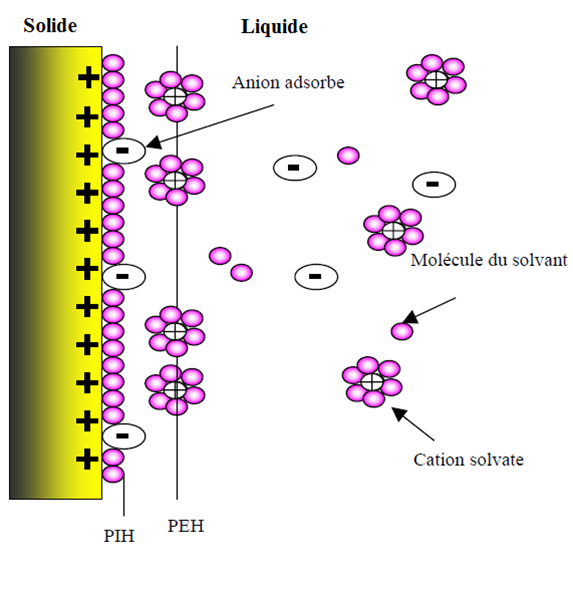What are you looking for ?
Content on this site
A person on the directory
Catalog training
Content on this site
A person on the directory
Catalog training
Topic supervisors:
Lucien Dascalescu (lucien.dascalescu@univ-poitiers.fr / +33 5 45 67 32 45)
Pierre-Olivier Renault (pierre.olivier.renault@univ-poitiers.fr / +33 5 49 49 67 45)
This theme is based on recognized expertise from the Pprime Institute in the field of Physics and Mechanics of Surfaces. The aim is to develop textures and micro-nanostructures of specific surfaces in order to control the electrical phenomena induced at the solid-fluid interfaces (Fig. 1).
Some actions in this theme are currently awaiting the arrival of a key experimental device, the ionic machinist (better known by the acronym FIB for Focused Ion Beam), which will allow surfaces to be produced with controlled specific characteristics, both in morphology and in size. Part of the actions of Theme 6 are articulated in parallel with the actions of Theme 3; they are likely to provide guidance in the development of the digital codes that are developed there.

Theme 6 is divided into 3 research themes:
Supervisors : Serguei Martemianov / Christophe Coupeau
This first action aims to master the Fluids and Solids interfaces. Particular attention is paid to the interactions between mechanical, thermal, electrostatic and fluid phenomena occurring at the Fluids and Solids interfaces. The study focuses on the double electric layer (DCE) developing on the surface of a solid due to the creation and separation of electric charges between the solid and the liquid.
Supervisors : Jean-François Barbot / Nouredine Zouzou
Supervisors : Lucien Dascalescu / Thami Zeghloul
The third action is based on the skills of researchers from the PPRIME Institute working on the IUT Angoulême site in the field of contact mechanics, lubricated or not, as well as in experimental modeling of electro-fluid phenomena. -dynamiques. This is a new subject which should lead to the development of a multi-physical model capable of reflecting in a coherent way the properties and mechanical (elastic, tribological), thermal, electrostatic, fluid-dynamic phenomena. contacts between solids, in liquid or gaseous media. The ultimate goal is to model sliding contacts in the presence of electrical charges. The basic hypothesis of this work is that the action of electric discharges could modify the tribological properties of surfaces in contact.
The approach should be both experimental, including the design and production of at least two instrumented test benches for the study of mechanical, thermal, electrical phenomena at the solid / solid, solid / liquid, solid / gas interfaces, in the presence of multiple constraints, and numerical, comprising the writing of the equations describing the various phenomena and the identification of the best calculation techniques, adapted to the study of multi-physical and multi-scale phenomena.